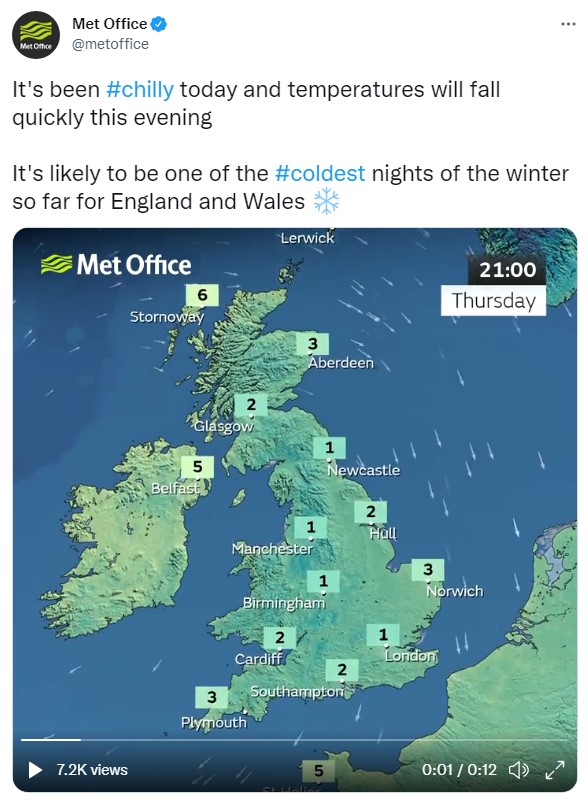
Rebecca Holloway
Senior Social Media Strategist
Rebecca is an award winning Senior Social Media Strategist who specialises in paid social media campaigns.

Inspired by Series 2 of the Sharing Social podcast, I'm sharing 6 Twitter tips tried and tested by the likes of IBM, Reckitt and the Met Office that you can implement into your own strategy.
Twitter is an important platform for many, especially businesses within the professional services industry. I’m sharing 6 tips you can implement into your strategy to result in increased brand awareness, more website traffic, and increasing conversions.
All of these tips come from our recent series of the Sharing Social podcast. We’ll link to the relevant episode as we go.
Let’s get started!
Nada Alkutbi, Social Media Leader at IBM, talked us through the “four C’s”, her ingenious content framework. It’s simple to use, helps you stay focused on your objectives, and helps tailor your content to provide value to your audience.
You can use this concept to help you plan your content for Twitter, but you could easily use this across other platforms too.
The four C’s consist of:
Listen to the Nada talk about the four C’s.
Have you ever hosted a Twitter chat or Space with an influencer? During the episode, Nada discusses how important she feels influencer marketing is for IBM:
Influencers have significant authority and credibility in the marketplace, and can help us reach new audiences that we simply can’t reach ourselves.
Nada Alkutbi, Social Media Leader at IBM
Twitter chats
A Twitter chat is a conversation that takes place on Twitter, where a selection of questions is asked over the space of an hour, building connections around one specific hashtag. They’re easy to organise and can be a low-risk, time-efficient way to collaborate with an influencer from your niche.
Twitter Spaces
Twitter Spaces take a little more time investment. They allow a live audio conversation to take place between a host and a number of speakers. You can invite listeners up on the virtual stage to add their thoughts to the conversation.
Twitter Spaces can be a great source of content, which can be repurposed into podcast episodes, blog posts, social media snippets, and more!
Before going ahead with a Twitter chat or Space, it’s important to define the outcome you’re looking for. What are you hoping to achieve?
The next question to ask yourself is which industry influencer has a strong level of engagement with their Twitter audience? You want someone who has a strong connection with their network so you can harness this power in your event.
You could always consider running a live audio event on another platform, for example, LinkedIn or Clubhouse.
Twitter chats can be great for building engagement on your profile and can be a great way to collaborate with an influencer.
Listen to how IBM choose the right influencers for their online event.
Social media changes all the time, new platforms come and go, and it can be tempting to feel like you have to produce content for every channel, regardless of whether your audience is there.
You should streamline your presence on social media to ensure your content is directly tied towards your marketing goals and is providing value to your audience.
Different strengths and expertise are required for different platforms, and video-heavy platforms like TikTok can require a lot of time and resources to work well. Generally, professional services firms tend to lead towards Twitter and LinkedIn as their primary channels. Once these are optimised and working well, then you can explore branching out to more channels.
When it comes to any social media campaign, you must define your goals and objectives to ensure that all of your content is helping you work towards achieving your goals. You should never be relying on guesswork.
Some of the most common goals marketers work towards using social media include:
When we spoke to Reckitt about their goals, they were heavily centred around how the right type of content could be created for their three major audiences: the media, NGOs, and investors.
We’ve got a cheat sheet to help you define goals for your next campaign, taking into account location, audience demographics, type of content, and channel.
Listen to our episode on building a corporate reputation through social media.
There can be a crossover in types of content creation between each social media channel, like the Stories feature. You’ll see that on Instagram, Facebook, and soon TikTok. But it’s important to lean into the unique features of each platform where possible.
Twitter, for example, is primarily text-based. It’s fast-paced and updates in real-time. Lots of the trending topics and content are driven by current news stories and situations happening at the moment.
That’s why Twitter is such a powerful platform for the Met Office. When we interviewed Ross Middleham on the podcast, he told us how Twitter was the Met Office’s biggest platform with over 800,000 followers:
Twitter is our biggest audience. That’s the one that we’ve been on longest, no surprise to people. And we’ve got over 800,000 followers there. We use that as a kind of rolling news channel, much like most people use, but that fits perfectly with the weather and the ever-changing nature of the weather to keep people updated.
Ross Middleham, Content & Social Lead at the Met Office
The frequent updates on Twitter suit the ever-changing nature of the weather perfectly.
Listen to our interview with Ross here.
Finally, no matter which platform you’re focusing on for your campaign, it’s imperative that you’re measuring your performance. This will help you identify which types of content is resonating with your audience and bringing the most results.
The Met Office found that people were engaging with graphics on Twitter. These tweets were getting more engagement than other types, and this prompted the content team to start producing more graphics optimised for the platform.

However, on YouTube, for example, visitors resonated much more with a presented weather forecast. If you looked at content on TikTok, it would be different again.
Have any queries about your Twitter strategy? Or, would you like some extra support in creating one for your business? Email me at [email protected].

Senior Social Media Strategist
Rebecca is an award winning Senior Social Media Strategist who specialises in paid social media campaigns.
View my other articles and opinion pieces below
You know your business needs to use LinkedIn. With over a billion users, LinkedIn is the premier platform for connecting with your investors, customers, employees, industry peers and other stakeholders. You’ve only got one question. What should your organisation actually post about? So many businesses know that there are big benefits to engaging with their […]

“Thought leadership” has become an essential part of B2B marketing. Ever since Google’s helpful content update, it’s been more important than ever for your organisation’s team members to be producing high-quality, informed content in their areas of expertise. What is thought leadership? Articles, LinkedIn posts, blogs, videos – all of this comes under that umbrella. […]

Understanding multi-market paid strategies is crucial to the success of any social media marketing campaign. I recently had the opportunity to speak at the International Social Summit in Barcelona, collating experiences from the past year to share some advice for organisations planning their own paid campaigns across multiple regions. The Problem Running a multi-market campaign […]

Think of an advert. Any advert. What came to mind? Maybe it was the Go Compare singer, policemen with kids’ voices eating Haribo sweets, or the Old Spice man. Maybe, from some deep groove in your brain, a single phrase rang out, as easy to remember as your mother’s name or your earliest childhood memory: […]
